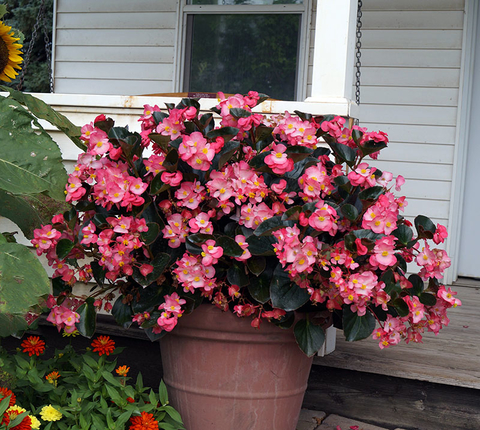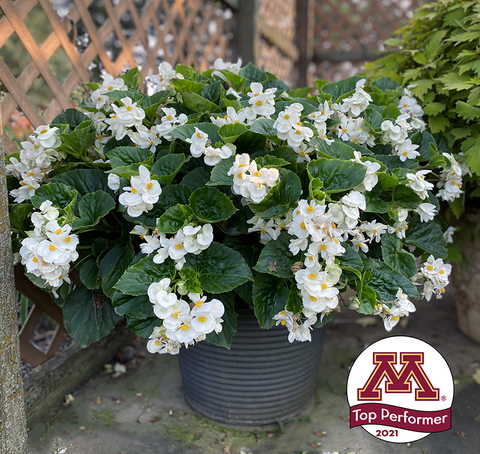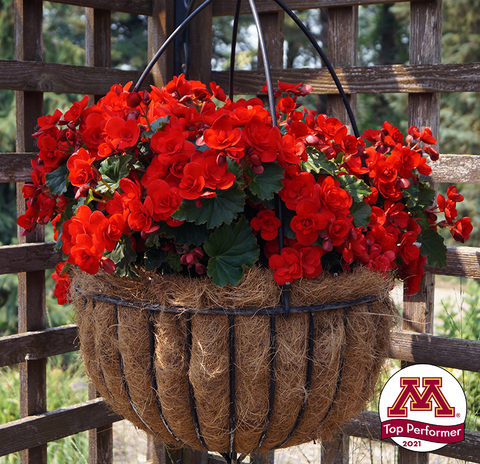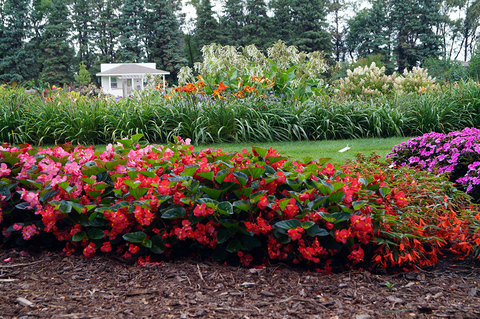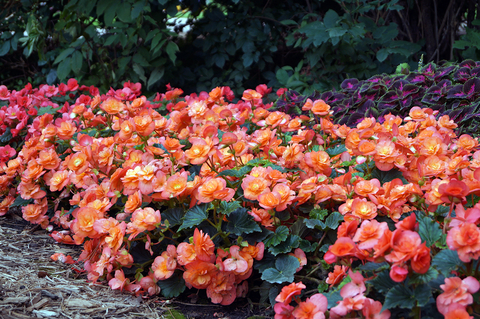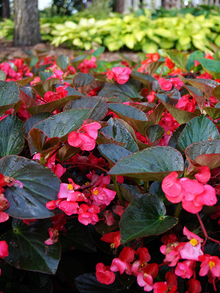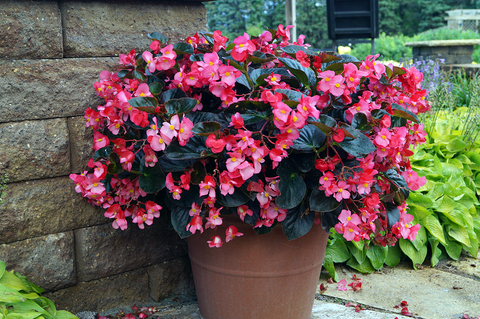Quick facts
- Begonias prefer shade over direct sun.
- Begonias can have upright and mounding habits great for garden beds or a trailing habit perfect for containers or hanging baskets.
- They are grown for the attractiveness of the foliage or their flowers or both.
- Four main types: wax, tuberous, cane, and rhizomatous.
- Begonias can be overwintered as house plants.
Begonias belong to the genus Begonia, which contains more than two thousand species and are native to tropics all around the world. Many of the cultivars commonly grown for their ornamental value are hybrids of these multitudes of species.
Begonias are a forest understory plant, so they are adapted to shadier environments rather than full sun.
These plants are grown for their attractive foliage, which often comes in shades of green, brown, bronze or maroon. While other hybrids are grown for their flowers, which can be shades of red, pink, white, yellow, or orange. Many newer varieties are grown for both their foliage and flowers.
Plants can come in a range of sizes varying anywhere from six to twenty-four inches in height and can have a single stalk, bushy habit, or anything in between.
There are four main types of begonias: wax, tuberous, cane, rhizomatous.
- Wax begonias, also referred to as semperflorens or fibrous-rooted begonias, are commonly grown for both their foliage and flowers. As the name implies, the leaves have a waxy appearance. This group of begonias can come in varying growth habits.
- Tuberous begonias are grown from tubers and the tubers can be dug up in the fall and stored in a cool, dry place to plant again the next year. This type is typically grown for its flowers and not the foliage. Tuberous begonias can have a trailing or an upright habit.
- Cane begonias have an upright habit with one main stem. These cultivars are grown for both their flowers and their foliage and can get quite large, up to several feet tall.
- Rhizomatous begonias grow from underground rhizomes and are grown for their foliage. They typically have a more mounding than upright habit.
Good performers
Annual begonias are evaluated as part of the U of M flower trials and research. Located at the WCROC in Morris, MN, the Horticulture Display Garden serves as an All-America Selections (AAS) Display Garden and Trail Grounds and provides the public an opportunity to view the newest superior performers.
The following annual begonia cultivars were rated good to excellent in our recent trials:
- BIG® series
- BK Collection
- Whopper® series
- Solenia® series
- Megawatt™ series
Growing outdoors
Begonias work great for garden beds if they have an upright or mounding habit while trailing or spreading begonias are best for containers or hanging baskets.
- Very few cultivars will tolerate full sun so plant them in a shady location. They can tolerate morning sun but avoid putting them in a location that receives afternoon sun.
- Plants can be transplanted outdoors once the soil temperature reaches at least 60 degrees and should be spaced about a foot apart.
- Make sure that the soil is well drained as begonias are susceptible to root rot. To increase the drainage of heavy garden soil, incorporate compost or sand.
- The ideal soil pH for begonias is between 5.5 and 6.5.
Feeding and watering
A general-purpose fertilizer with equal amounts of Nitrogen, Phosphorous, and Potassium should be incorporated into the soil at the time of planting. After planting, begonias should be fertilized monthly using a fertilizer with a higher phosphorous than nitrogen content to promote new blooms but if the plant is only being grown for its foliage, continue using a balanced fertilizer.
Begonias require regular watering and should be watered at the base of the plant, when possible, to avoid fungal leaf diseases such as powdery mildew. Do not overwater begonias since they are highly susceptible to root rot.
Pests are usually not a problem, but fungal diseases are as previously stated. Good air circulation will help prevent leaf diseases but, if necessary, they can be treated with a fungicide. Root rot is usually harder to treat as by the time symptoms start to show up, it is too late to cure.
Other tips for abundant blooms and healthy plants:
- Stake taller upright varieties to help support the abundant foliage and blooms.
- Keep the soil surface clean to prevent the growth of disease.
- Protect begonias from high wind environments as they can have fragile foliage and blooms.
Propagation
Begonia seeds can be started indoors about 16 weeks prior to the anticipated outdoor planting date. Use a growing media specifically designed for germinating seeds. Follow these guidelines for successful seed propagation:
- Plant on soil surface, do not cover seeds.
- Keep the seed and media moist by using a plastic cover over the seeding tray. Use a misting bottle to water.
- Seeds will germinate in 15-20 days at 70-75°F.
- After germination, grow plants at 70-75°F during the day and 65-70°F at night.
- Begonia seedlings are very slow growing. Even after germination, make sure they are getting 14 hours of light a day. Fertilizer weekly with half-strength fertilizer to promote growth.
Begonias are easily propagated via cuttings in about 3-4 weeks. To do this, cut 2-3 inches off a branch of the plant and then remove any leaves off the bottom half of the cutting. Place cuttings in enough water to cover where the leaves were removed. Once roots begin to grow, they can be transplanted into soil.
Good to know
Begonias are toxic to cats and dogs so be aware of this when choosing a location.
Reviewed in 2022


